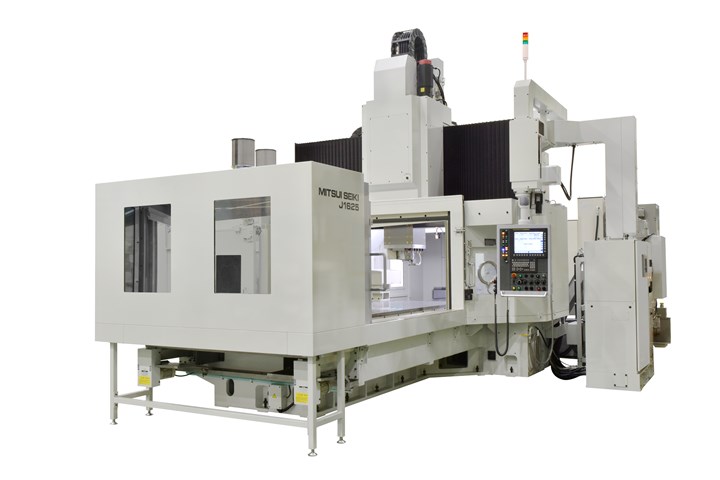Jig Borer Series Meets Increasing Accuracy Needs for Molds, Castings Workpieces
J12/J16 jig borer series from Mitsui Seiki combines large capacity and high precision to process a large range of part sizes.
According to Mitsui Seiki USA, a builder of jig borers, the market demand for these ultra-precise machines is on the rise. “Jig borers typically last 25 to 30 years,” Mitsui Seiki USA’s Bill Malanche, COO, says. “Now seems to be the time that people are retiring their legacy machines and looking to buy new.” Mitsui Seiki’s newest line, the J12/J/16 jig borer series, combines large capacity and high precision to meet the increasing need for accuracy for machining workpieces such as molds and castings. The machines offer Y-axis stroke of either 1,250 mm or 1,600 mm, with standard table sizes of 2,400 mm × 1,250 mm or 2,900 mm × 1,600 mm.
The machines’ strong and durable structures provide table lateral movement accuracy of 2.5 µm or better, according to the company. The Z-axis guide system is restrained on four sides to maximize rigidity and reliability, and dual ball screws ensure stable feed motion.
For precision holemaking applications, XY interpolation enables the J12/J16 machines to carry out high-precision contouring by utilizing an end mill instead of a boring tool, eliminating the need to manually adjust a boring tool to accurately finish the hole diameter, thus avoiding bottlenecks. Pitch accuracy is within 5 µm even for large-pitch holes.
The machines feature a 12,000 rpm 50-taper spindle and automatic tool change capacity of 60 tools. Additional options such as quill spindle, increased work capacity, as well as automation features are available to meet customers’ needs.
“Machines in Mitsui Seiki’s J12/J/16 jig borer series are engineered to process a large range of part sizes with unceasing repeatability,” Malanche adds. “They provide the durability, accuracy and flexibility required in today’s highly competitive manufacturing environment.”
Related Content
-
How to Eliminate Chatter
Here are techniques commonly used to combat chatter and guidelines to establish a foundation for optimizing the moldmaking process.
-
Three Good Reasons to Switch from Three- to Five-Axis Machining in Moldmaking
Five-axis machining technology is a great tool in the moldmaker toolbox.
-
How to Analyze and Optimize Cutting Conditions to Reduce Cycle Time
Plastic injection mold design and manufacturing company puts NC program optimization software module to the test. The results were surprising.
















.jpg;maxWidth=970;quality=90)